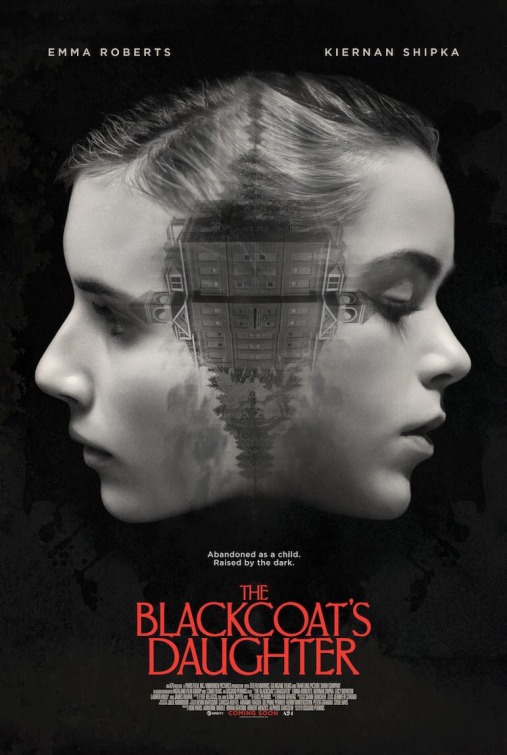A24 Films delivers once again with a demented horror film that succeeds in spiritual disruption.
Uncanny supernatural tone
When I was a freshman in high school, I watched the 1973 “The Exorcist,” an experience I never want to relive as I came away unfathomably perturbed spiritually. I have not had a more extreme response to a horror film until I watched Oz Perkins’ debut film “The Blackcoat’s Daughter (February),” starring Emma Roberts, Lucy Boynton and Kiernan Shipka.
With a jarring initial dream sequence, Perkins’ adamantly sets the film’s uncanny supernatural tone, which trickles and oozes its way into the remaining plot with relentless force. “The Blackcoat’s Daughter” flusters viewers with chilling ambiance unraveled by a slow burn storyline undeterred by demonic happenings, congregated by a horned, lingering black figure pulling the strings to the film’s horrific aspects.
The film’s heinous nature takes its sweet time as it unveils itself and it pays off. Perkins twists and turns the audience’s expectations with its lack of chronological plot structure, effectively making up for the lack of understanding. This film disorientingly unpacks and replays events for a cryptic understanding. The unconventional weaving of two parallel plots manages to find its way in perfectly demented unison near the end. The director trusts his viewers to pick apart the significance underlying the imagery and implications of foreshadowing used in order to comprehend this culmination of meaningful scenes, which in turn rewards with a twist placed right in the middle of the film for audiences to bite on.
The actresses lend phenomenal roles across the board. But none are as memorable and as discomforting than Shipka’s performance as Katherine. Soon after Katherine’s parents were killed in a car crash, the orphan becomes possessed by a demon masquerading as her companion. Kat slowly becomes sunken into her possessed, demented state — a petrifying sight.
Distress furthers when she defiles religious practices of prayer and bows to her demonic captor in relentless and cryptic fashion. Aside from being spiritually altered, Kat also physically changes, diminished to a skeletal complexion abstrusely tied together by a crooked smirk clouted by conspicuous satanic intentions. The unwavering loneliness and isolation clouding Katherine provide the grounds for the film’s manic display. The degree to which Katherine amends her loneliness results in a relentless, unnerving performance — an unholy spectacle nonetheless.
An asphyxiating atmosphere
Through an asphyxiating atmosphere, Perkins proves himself a madman. He cuts at viewers’ spiritual comfort with moments encompassed by unhinging placidity, ominous reticence and unsought confinement — elements that, without consent, harken back to the unwavering terror “The Exorcist” brought upon me five years ago.
Supernatural films such as “The Blackcoat’s Daughter” maintain artistic merit. However, believers should stay cautious and use logical judgment before considering such a heavily supernatural film, as it wields a daunting sword of unfathomable satanic horror.
Artistically adept films cut from the same mold as “The Exorcist” and “The Blackcoat’s Daughter” attempt to confront evil by exploring the evil tendencies of humans in a sinful world. In an interview with National Catholic Register, Biola alumnus Scott Derrickson expresses the importance of carefully crafted horror films that deal with satanism and spirituality because they are “not about putting something evil in the world. It’s about reckoning with evil. We don’t need any more evil in the world. We need a lot more reckoning with it.”
“The Blackcoat’s Daughter” deserves a chance at reckoning. Similar to Derrickson’s approach to these themes, Perkins properly accentuates the darker places of not only cinema but humanity. Nevertheless, the vitality of individuals approaching these type of movies like “The Blackcoat’s Daughter” with discernment cannot be stressed enough.







